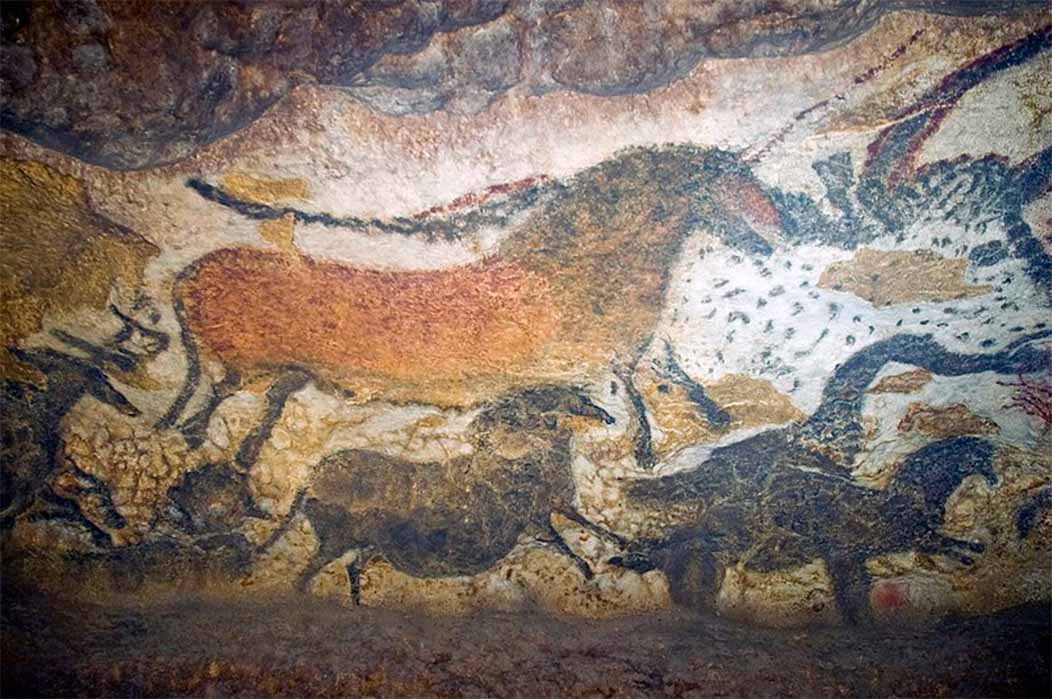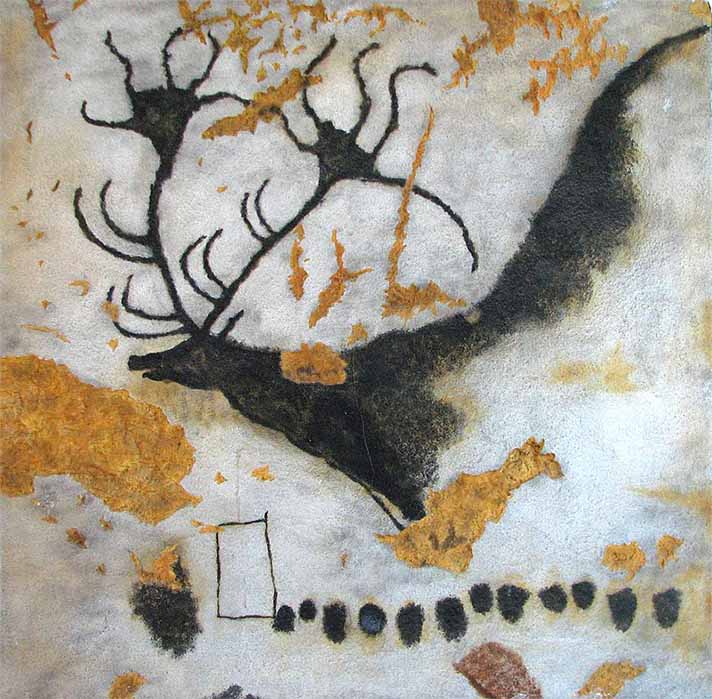
What Were The Ice Age People Counting?
Thousands of sequential marks were painted and engraved on European portable objects and cave walls between 50,000 to 12,000 years ago. These Upper Paleolithic marks under question are depicted with straight lines, rectangular designs, strings of dots, and other shapes. Many hypotheses have emerged to describe these marks, including hunting magic and tallies, fertility and initiation rites, art for art’s sake, pareidolia, cosmology, mathematical sets designating time and altered states of consciousness.
The mathematical sets designating time hypothesis was initially forwarded by the American science writer Alexander Marshack who became concerned with what he called the “suddenlies” of common astronomical knowledge appearing to emerge on different continents in the ancient world. Marshack believed that some of the basic astronomical time-keeping knowledge, such as counting the phases of the moon, was more reasonably established deep in prehistory and then later inherited by civilizations in the ancient world after continued use.
Many details of Marshack’s work are intriguing and prehistorians have long been influenced by him. In a train of thought that may have been long ahead of his time, Marshack also forwarded the notion that people are today more technically advanced than Ice Age people but, not smarter. Marshack gave convincing evidence that Ice Age people could count and had a sense of mathematical sets. Still, he never established a measurable motive for the making of his proposed lunar marks in Ice Age imagery.
Timing Is Everything
The Upper Paleolithic cave image most often pointed to as being designated with lunar counting is the “Black Stag” in the French cave of Lascaux, dating to approximately 17,000 years ago. The species may be either a megaloceros (Megaloceros giganteus) or red deer (Cerrus elaphus). The Lascaux artist leaves room for interpretation in the stylization of the Black Stag’s antlers. What can be determined, based on his large autumn antler set, arched neck and fogged hot breadth in the morning air, is that he is rutting.

Replica of the rutting “Black Stag” with his full autumn antler set, neck raised, and hot breath calling in the cows during a cool morning. He rides on a series of 13 black dots that lead to a box. This 13-count may be the lunar phases leading up to the full moon at the box. (Public Domain)
The Black Stag rides on 13 dots which end in a box. There have been different interpretations of this characteristic lunar 13 count with the moon phases going in the direction from either 13 nights from the first crescent moon to the full moon or from a full moon to the new moon. Note that the seventh dot in the series for the Black Stag is raised, indicating the quarter (half-moon) of the lunar cycle in either direction. This count of 13 can be also found with other animals at Lascaux, such as a deer stag, called the “Major Stag,” in The Apse who has two marks on his belly that can be interpreted as a box.
Whether the 13-lunar count for these animals is to or from a full moon with the dots forming the box signifying either full moon or new moon is also somewhat intuitive and can be examined through continued worldwide use. The most common method of counting within each 29.5-night lunar phase cycle is to start at the first visible crescent moon and then count 13 nights until the first full moon. The first crescent is the most distinguishable phase of the moon. The moon is dark at new moon and then there at the first crescent. A full moon to new moon count is more challenging as one has to first determine which of the two full moons to start from. That approach would require counting 13 nights from the first crescent moon to start such a second half of cycle count.
- Dating Lascaux Art by Precession
- Ancient Transmissions Of The History Of The Constellations
- Ancient Animal Envoys From Caves And Cosmos
Traditions recorded in the anthropological literature give evidence that 13 is the number of days leading up to the full moon from the first crescent (waxing) moon and when indigenous hunters in both Siberia and North America had specific hunting strategies for and success in harvesting deer, elk and other ungulates. The rut is a period when hunters can call in the male with either a challenging deep bellow or an inviting higher pitched female sound. Ice Age visitors to Lascaux may have ceremonially called to the Black Stag.
This 13-count lunar tradition is retained in the western world through the “Ecclesiastical Full Moon” among Christians. To find Easter on the Christian calendar, one starts at the vernal equinox, and then go to the Sunday that succeeds the Ecclesiastical Full Moon. Easter shifts each year on the solar calendar because the movement of the moon through its phases is out of sync with the sun. Note that this conflict of solar and lunar clocks explains why the migrations of many species appear early or late on the solar-based Gregorian calendar. The animals are neither early nor late but on their own biological time. This timing mechanism is much older than the observance of Easter by Christians and may derive from peoples who hunted game or fished.




